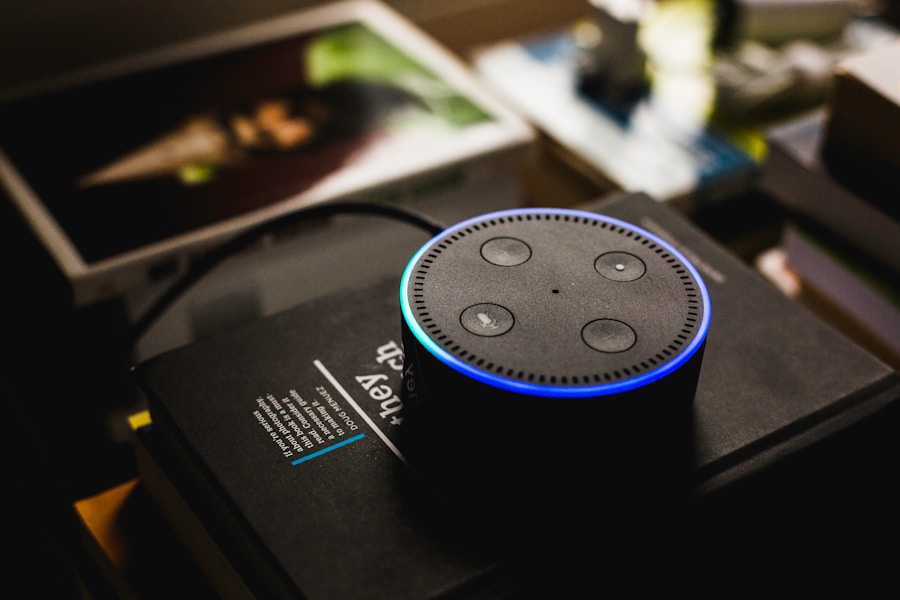Voice search has become an increasingly popular way for people to find information online. With the rise of virtual assistants like Siri, Alexa, and Google Assistant, more and more people are using their voices to search for information rather than typing it into a search bar. This shift in behavior has led to the development of voice search algorithms, which are designed to understand and interpret spoken language in order to provide accurate and relevant search results. In this article, we will explore the world of voice search algorithms, including how they work, the challenges they face, and the future of this technology.
Voice search algorithms are a type of artificial intelligence that is designed to understand and interpret spoken language. These algorithms use natural language processing (NLP) and machine learning to analyze the words and phrases spoken by a user and then provide relevant search results. This technology has become increasingly important as more and more people use voice search to find information online. In fact, according to a study by ComScore, 50% of all searches will be voice searches by 2020. As a result, companies are investing heavily in voice search technology in order to provide users with the best possible experience.
Understanding Voice Search Algorithms
Voice search algorithms are complex systems that are designed to understand and interpret spoken language in order to provide accurate and relevant search results. These algorithms use a combination of natural language processing (NLP) and machine learning to analyze the words and phrases spoken by a user and then provide relevant search results. NLP is a branch of artificial intelligence that focuses on the interaction between computers and human language. It involves the development of algorithms that can understand and interpret human language in order to perform tasks such as language translation, sentiment analysis, and speech recognition. Machine learning, on the other hand, is a type of artificial intelligence that allows computers to learn from data and improve their performance over time.
Voice search algorithms use NLP and machine learning to analyze the words and phrases spoken by a user and then provide relevant search results. This involves breaking down the spoken language into its component parts, such as words and phrases, and then using machine learning algorithms to understand the meaning behind these words and phrases. For example, if a user asks a virtual assistant for the weather forecast, the voice search algorithm will use NLP to understand the user's request and then use machine learning to provide an accurate and relevant response. This process is incredibly complex and requires a deep understanding of both human language and artificial intelligence.
Natural Language Processing and Voice Search
Natural Language Processing (NLP) is a branch of artificial intelligence that focuses on the interaction between computers and human language. It involves the development of algorithms that can understand and interpret human language in order to perform tasks such as language translation, sentiment analysis, and speech recognition. NLP is an essential component of voice search algorithms, as it allows computers to understand and interpret spoken language in order to provide accurate and relevant search results.
Voice search algorithms use NLP to analyze the words and phrases spoken by a user and then provide relevant search results. This involves breaking down the spoken language into its component parts, such as words and phrases, and then using NLP algorithms to understand the meaning behind these words and phrases. For example, if a user asks a virtual assistant for the nearest coffee shop, the voice search algorithm will use NLP to understand the user's request and then provide a list of nearby coffee shops. This process requires a deep understanding of human language and the ability to interpret spoken language in real-time.
The Role of Machine Learning in Voice Search
Machine learning is a type of artificial intelligence that allows computers to learn from data and improve their performance over time. It is an essential component of voice search algorithms, as it allows computers to understand the meaning behind spoken language and provide accurate and relevant search results. Machine learning algorithms analyze large amounts of data in order to identify patterns and make predictions about future events. In the context of voice search, machine learning is used to analyze the words and phrases spoken by a user and then provide relevant search results.
Voice search algorithms use machine learning to analyze the words and phrases spoken by a user and then provide relevant search results. This involves training machine learning algorithms on large datasets of spoken language in order to teach them how to understand and interpret human language. For example, if a user asks a virtual assistant for restaurant recommendations, the voice search algorithm will use machine learning to analyze the user's request and then provide a list of nearby restaurants. This process requires a deep understanding of both human language and machine learning in order to provide accurate and relevant search results.
Challenges in Voice Search Algorithms
While voice search algorithms have made significant advancements in recent years, they still face several challenges that can impact their accuracy and relevance. One of the main challenges is understanding the context of a user's request. Human language is incredibly complex, with many words having multiple meanings depending on their context. This makes it difficult for voice search algorithms to accurately interpret a user's request and provide relevant search results.
Another challenge is dealing with accents and dialects. People from different regions often speak with different accents or dialects, which can make it difficult for voice search algorithms to accurately interpret their spoken language. This can lead to misunderstandings and inaccurate search results, which can be frustrating for users.
Improving Voice Search Algorithms
In order to overcome these challenges, companies are investing heavily in research and development to improve voice search algorithms. One approach is to use more advanced natural language processing (NLP) techniques that can better understand the context of a user's request. This involves training algorithms on large datasets of spoken language in order to teach them how to accurately interpret human language.
Another approach is to use more advanced machine learning techniques that can better understand accents and dialects. This involves training algorithms on large datasets of spoken language from different regions in order to teach them how to accurately interpret different accents and dialects.
The Future of Voice Search and Algorithmic Advancements
The future of voice search looks incredibly promising, with continued advancements in natural language processing (NLP) and machine learning expected to improve the accuracy and relevance of voice search algorithms. As more people continue to use voice search as their primary way of finding information online, companies will continue to invest heavily in research and development in order to provide users with the best possible experience.
One area of focus is improving the context understanding capabilities of voice search algorithms. By using more advanced NLP techniques, companies hope to better understand the context of a user's request in order to provide more accurate and relevant search results.
Another area of focus is improving accent and dialect recognition capabilities. By using more advanced machine learning techniques, companies hope to better understand different accents and dialects in order to accurately interpret spoken language from people around the world.
In conclusion, voice search algorithms are an essential component of modern technology, allowing people to find information online using their voices rather than typing it into a search bar. These algorithms use natural language processing (NLP) and machine learning to understand and interpret spoken language in order to provide accurate and relevant search results. While they still face several challenges, companies are investing heavily in research and development in order to improve the accuracy and relevance of voice search algorithms. The future looks incredibly promising, with continued advancements expected to provide users with an even better experience when using voice search technology.



